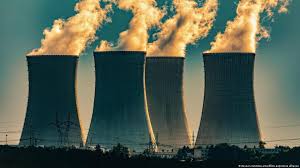Introduction about Nuclear Power: In the quest for sustainable energy sources, nuclear power emerges as a polarizing yet potent contender. With its ability to generate vast amounts of electricity without emitting greenhouse gases, nuclear power offers a tantalizing solution to the dual challenges of energy security and climate change. However, its complex technology, safety concerns, and the specter of nuclear proliferation cast a long shadow over its promise. In this comprehensive exploration, we delve into the intricacies of nuclear power, examining its history, operation, benefits, drawbacks, and the evolving landscape of nuclear energy in the 21st century.
From Bombs to Reactors: The Evolution of Nuclear Technology: The transformative potential of nuclear fission was swiftly recognized during World War II, leading to the development of the atomic bomb under the top-secret Manhattan Project. The devastating bombings of Hiroshima and Nagasaki in 1945 underscored the awesome power of nuclear weapons, triggering profound ethical and geopolitical debates. However, in the aftermath of the war, attention shifted towards harnessing nuclear energy for peaceful applications, including electricity generation.
The Mechanics of Nuclear Power: At its core, nuclear power relies on the controlled chain reaction of nuclear fission to generate heat, which is then converted into electricity. The process begins with the bombardment of fissile nuclei, typically uranium-235 or plutonium-239, by neutrons. This induces the nuclei to split into lighter fragments, releasing a cascade of additional neutrons and a tremendous amount of energy in the form of heat.
The Promise of Nuclear Power: Nuclear power offers several compelling advantages that have contributed to its widespread adoption and continued relevance in the global energy landscape:
Base-load Capacity: Nuclear reactors operate continuously, serving as reliable base-load generators that complement intermittent renewable energy sources like solar and wind, thereby ensuring grid stability and reliability.
Safety Risks: The catastrophic accidents at Chernobyl in 1986 and Fukushima in 2011 serve as stark reminders of the potential hazards associated with nuclear power. While modern reactor designs incorporate stringent safety features, the risk of accidents, human error, or natural disasters remains a source of apprehension.
Public Perception: Public acceptance of nuclear power varies widely, influenced by factors such as safety concerns, environmental considerations, and trust in regulatory authorities. Addressing misconceptions, fostering transparency, and engaging with stakeholders are essential for building trust and garnering support for nuclear energy.
Integration with Renewables: Nuclear power can complement renewable energy sources like solar and wind, providing stable, low-carbon electricity to support grid stability and decarbonization efforts.
Global Cooperation: Addressing global challenges such as nuclear proliferation, waste management, and safety culture requires sustained collaboration among nations, international organizations, and industry stakeholders.
Historical Evolution: The journey of nuclear power begins with the groundbreaking discoveries in the field of nuclear physics during the early 20th century. Pioneering scientists such as Marie Curie, Ernest Rutherford, and Niels Bohr laid the groundwork for understanding the structure and behavior of atomic nuclei. The pivotal breakthrough came with the discovery of nuclear fission by Otto Hahn and Fritz Strassmann in 1938, which revealed the extraordinary energy released when heavy atomic nuclei split into lighter fragments.
Conclusion:Nuclear power stands as a testament to humanity's ingenuity and ambition, offering a glimpse into the immense energy potential locked within the atom. While fraught with challenges and controversies, nuclear energy holds immense promise as a clean, reliable, and scalable source of electricity for generations to come. By embracing innovation, fostering cooperation, and engaging in constructive dialogue, we can unlock the full potential of nuclear power and pave the way towards a brighter, more sustainable future.
https://dev-smemranali.pantheonsite.io/

_thumb.png)



